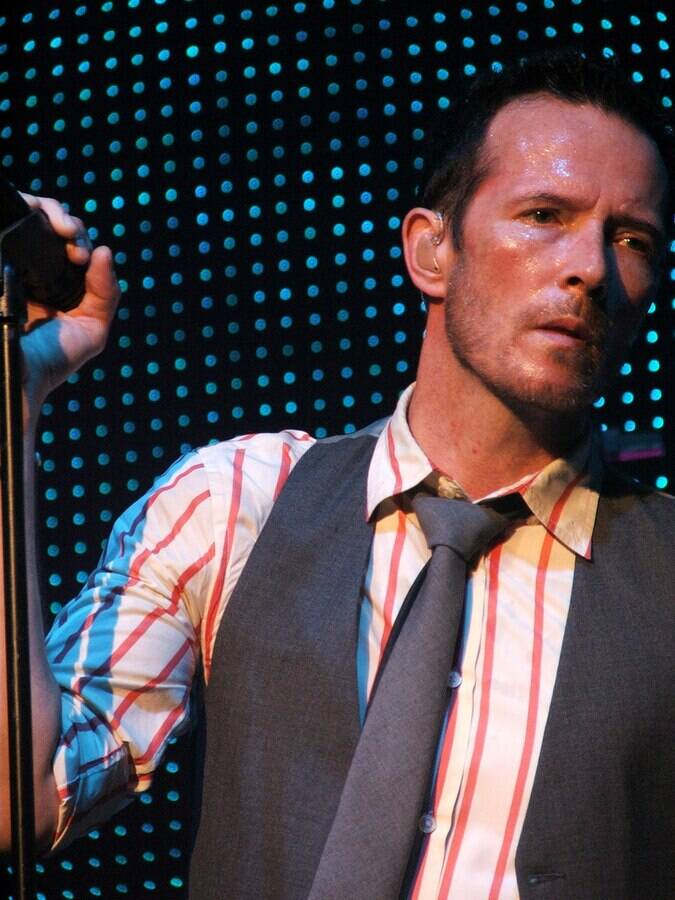I think this is absolute fantastic ......it sets the bar and a fine example.......of the fact that even disabled people.....can be considered for the amazing complex jobs .........disabled people can do as good ....sometimes if not better a job .......they do not let this interfere with their life ......great job for becoming an astronaut .........also if you are pissed off and complain ....here is a man that will show you .......better ...........
The First Astronaut With a Disability Is a Paralympic Bronze Medalist
The European Space Agency selected John McFall, along with 16 others, as part of its latest class of astronaut candidates
:focal(1145x872:1146x873)/https://tf-cmsv2-smithsonianmag-media.s3.amazonaws.com/filer_public/0e/45/0e450ced-05fc-4b25-a823-df3a2fc3ebfd/gettyimages-82939557.jpg)
In a bid to make spaceflight more inclusive, the European Space Agency (ESA) has hired its first astronaut with a physical disability. British Paralympic athlete and surgeon John McFall will join the ESA’s latest cohort of space travel candidates as a “parastronaut,” the agency announced last week.
McFall, who is 41, had his right leg amputated after a motorcycle crash when he was 19 years old. Following his recovery, he learned how to run again and became a professional track and field athlete in 2005. Representing Great Britain and Northern Ireland, McFall competed as a Paralympic sprinter and went on to win numerous awards, including a bronze medal at the Paralympic Games in Beijing in 2008.
/https://tf-cmsv2-smithsonianmag-media.s3.amazonaws.com/filer_public/47/2d/472d5cac-7eb7-45d9-9ab5-43c04dc334a2/gettyimages-1245055009.jpg)
While competing, McFall also earned a bachelor’s degree and a master’s degree, then went on to medical school. He’s currently training as a trauma and orthopedic surgeon in southern England and has three children.
“As an amputee, I never thought that being an astronaut was a possibility,” McFall said in an interview released by ESA.
As an astronaut candidate, however, he’s not guaranteed to go to space. McFall will participate in ESA’s parastronaut feasibility project, which aims to explore the potential path forward for astronauts with disabilities, including any “necessary adaptations of space hardware,” per ESA.
Last year, the space agency invited people with physical disabilities to apply to become astronauts. It sought applicants who were psychologically, cognitively, technically and professionally qualified to become astronauts, but who had specific physical limitations. ESA considered candidates who were roughly 4 feet tall or shorter, as well as those with leg length differences and a “lower limb deficiency,” such as amputations or congenital conditions involving their feet or legs below the knee. All told, some 257 people applied to be parastronauts.
With the selection of a parastronaut, the agency hopes to lead by example and inspire people with disabilities to apply for other jobs in the space industry.
“[McFall’s] really going to be pushing the boundaries,” says Tim Peake, ESA’s first British astronaut, to the New York Times’ Euan Ward. “He’s very much paving the way for astronauts with future disabilities to do so as well.”
/https://tf-cmsv2-smithsonianmag-media.s3.amazonaws.com/filer_public/d1/3b/d13bd26a-d4ac-46a7-91af-6737477876f2/esa_astronaut_class_of_2022_john_mcfall.jpg)
This latest class of astronauts is ESA’s first batch of new recruits in more than a decade. The agency’s staffers narrowed down 22,500 applicants from across its 22 member states to 17 total astronaut candidates—a number that includes five career astronauts, 11 reserve astronauts and McFall. The candidates will now undergo a year of basic training at ESA’s European Astronaut Centre.
Eight of the 17 astronaut candidates are women—a stark increase from ESA’s last class of six recruits in 2008, of which one was female. However, the cohort’s racial diversity is lacking: ESA did not select any people of color for this new class, writes the BBC’s Jonathan Amos. As David Parker, ESA’s director of human and robotic exploration, tells the BBC, the agency hopes to understand how that happened.
“We did all that we could in the way that we presented the selection process, in our visuals and graphics, to encourage people from a wide range of ethnic backgrounds. If you look back you will see that,” Parker tells the BBC. “I have to say that I am inwardly disappointed that we didn’t get people from those backgrounds coming forward, at least to the interview stage that I saw. We have to think about that and reflect on why it happened.”
/https://tf-cmsv2-smithsonianmag-media.s3.amazonaws.com/accounts/headshot/SarahKuta.png)
/https://tf-cmsv2-smithsonianmag-media.s3.amazonaws.com/accounts/headshot/SarahKuta.png)

No comments:
Post a Comment